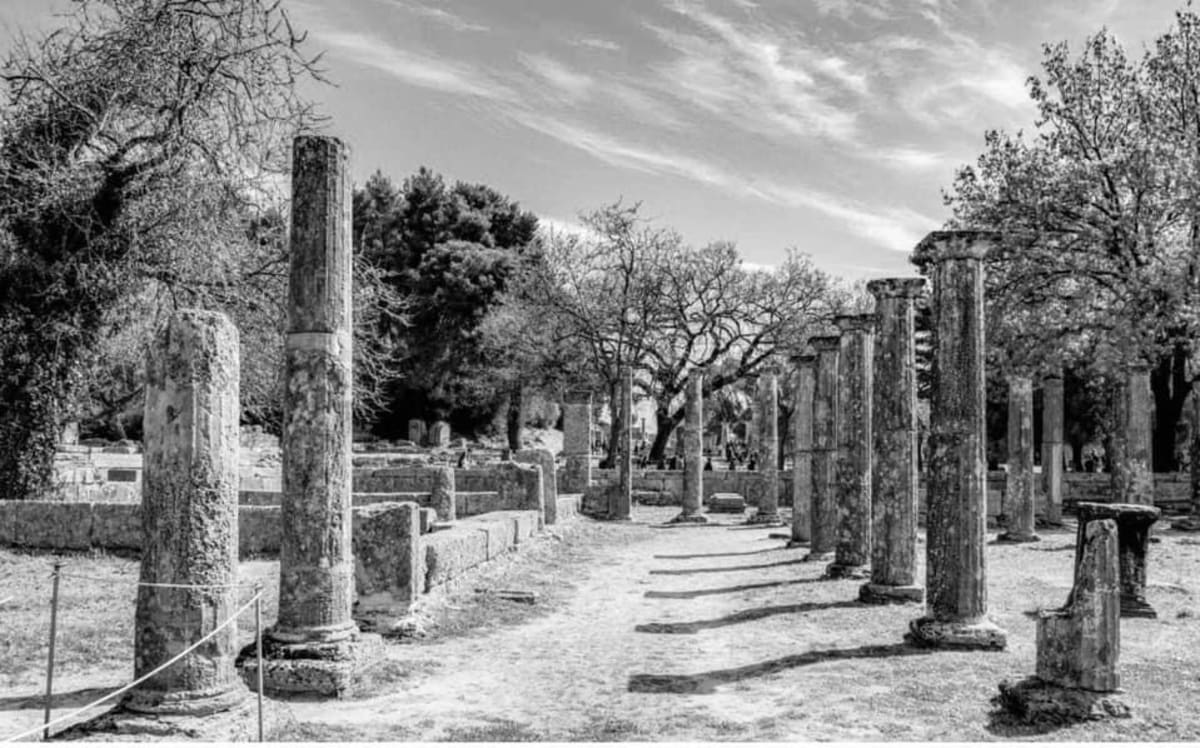Excerpt from: Et In Arcadia Ego: Poussin’s Painting Mystery Solved? article:
Then I noticed something I had missed before: THAT THE TWO YOUNG MEN PORTRAYED IN BOTH PIECES HAD WREATHS OF OLIVE BRANCHES OVER THEIR HEADS.
This meant that both pieces most likely portrayed the classical Greek period, because that is when the Olympic Games took place.
The olive wreath, known as “kotinos,” was the prize for the winners of the games in ancient Olympia.
The wreath, though simple, came with great honor and recognition, and only the winners of the different events got to wear the intertwined olive leaf wreaths on their heads.
Both pieces depict a natural landscape scene, and the tomb located next to what seems to be an olive tree.
Yes, the two young men were holding long thin sticks but that does not necessarily make it “a pastoral scene.” They most likely did so to ward off wild animals, as people that go on nature walks continue to do to this day in Greece.
“Et in Arcadia Ego,” the name of the painting, meant that the monument was from the Arcadia region of the Peloponnese.
The extra sarcophagus missing from the painting ties in with the shadow of the sickle, reflecting that “the monument was taken.”
It had been painted in reverse to draw attention to the monument.
He may also be telling us even more, for the title is all in French except for the word “in” word which is Latin. Was he saying that he had seen it “in” England? Possibly on the grounds of the Shugborough residence a century before the date it was claimed to have been commission and sculpted?
Above the marble relief on the sides of the monument are two stone heads, one showing a smiling man, the other the god Pan and under a large mantel is a meander motif, or the “Greek Key” design.
Yes, I believe this is the case, that it is another case of an important ancient Greek monument sitting on a foreign land.

August 1, 2024
Olympic Games & Et In Arcadia Ego